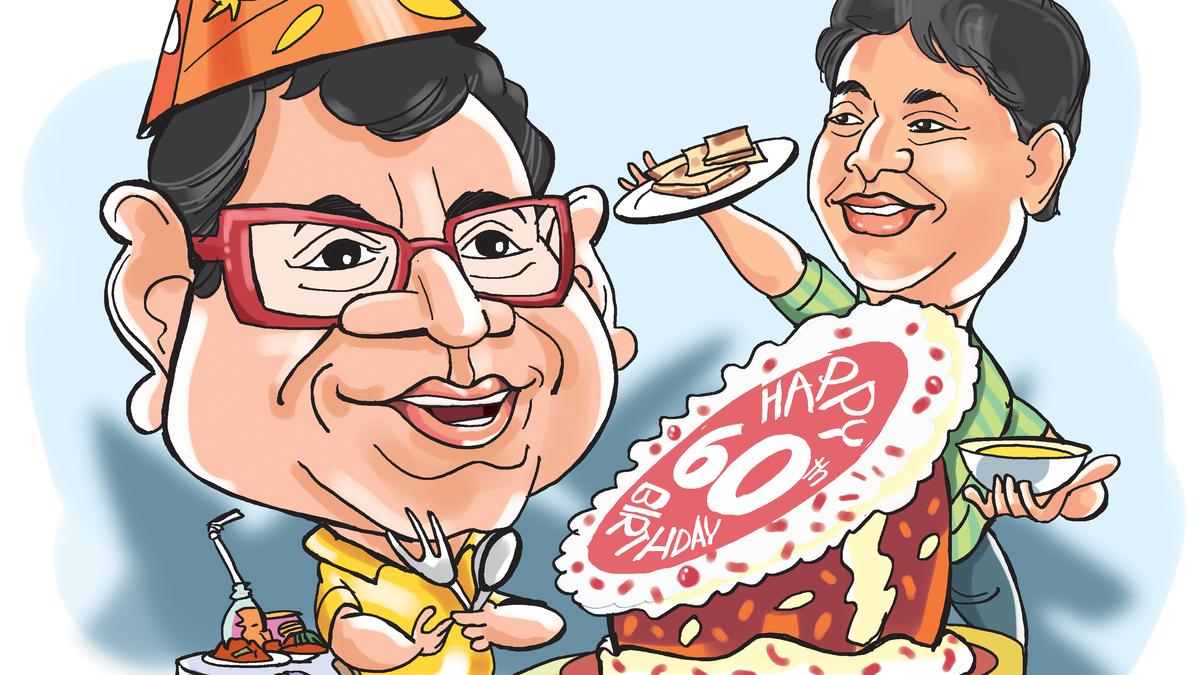
I know your eye is on Korea, no need to tell you to look in that direction. Back in 2014 when Euny Hong wrote The Birth Of Korean Cool, the subtitle went How One Nation Is Conquering The World Through Pop Culture. If Hallyu (“Korean Wave”) was in the middle of its conquest back then, in the last decade it has definitively hit the vici end of the veni vidi vici plan. 2014 was before Squid Game, before Parasite, before billboards celebrating BTS went up in Indore, before Chennai hosted K-pop dance contests, before south Delhi folks trekked to Ghaziabad movie theatres for special screenings of K-pop concerts, before The Vegetarian, Cursed Bunny and Love In The Big City and other Korean fiction became a staple of Booker lists. And it was well before Korean dramas, original flavour, no squid, became the happy place of millions of people around the world.
I know you are looking Seoul-wards and your gaze is warm but I wonder whether you have the same difficulties as I do in keeping Hallyu Korea separate from real Korea where people live their lives. I do, a little so every now and then I like to read a few headlines from Korea. And if you have been reading the occasional headline, you know that the deeply romantic K-drama land is radically different from the everyday lives of Korean women. And just as a viewer from India, all the obstacles in front of true love in drama land seems familiar, as a woman from India, all the obstacles in front of Korean women also seem familiar.
If you read Cho Nam-joo’s 2016 novel Kim Jiyoung, Born 1982 , depending on your fondness of realism as a genre, you might be aghast or satisfied. The protagonist is the second of two daughters, older than the much-awaited son (sounds familiar?). School, college, work, marriage, childbirth—it’s all extremely grim. The novel spells it out—Korean women have the cards stacked against them from birth. The book has sold over a million copies in Korea. Now, I have a general allergy to books that tell you the grim truth of a gendered reality and vastly prefer consuming art and daydreams in which the world is egalitarian and good-looking. But it’s hard to look away when you read news that a female K-pop star who said she had read Kim Jiyoung got massively trolled and threatened by male fans (because how dare she?). This is the kind of headline that is compelling and again, familiar.
What is not familiar and I simply cannot look away from is the next episode, so to speak. Korean women have responded to this situation with the 4B movement, which started in 2019 (partly inspired, apparently, by the Cho Nam-joo novel). “B” here is an abbreviation for four words that start with bi-, or “no”. The movement has a simple, radical agenda —No Dating, No Sex, No Marriage and No Children. Korean women are actively and loudly choosing single lives rather than being burnt out in a hypercapitalist society with traditional gender roles. This would sound like one of those trend stories you read in the international pages with mild scepticism—nice photo but really? Except, oh baby, there are no babies.
Back in 1960, a Korean woman would have had six children on an average. As of 2022, the birth rate became 0.78, the lowest in the world. And this finally panicked the Korean establishment. Instead of asking why women were taking this position, they decided to spend millions of dollars in propaganda to get women back on the programme. Propaganda is the only word for it. Way back in 2016, the government had the genius idea of publishing online a birth map showing the number of women of reproductive age in each district to shame low-achieving regions; the website was shut down following a backlash.
Women have not budged and the state’s panic about an ageing population and dramatically declining fertility has continued. Given this situation, it was disturbing to read about the 2022 national election which brought an avowedly anti-feminist President Yoon Suk-yeol to power. It was like Andrew Tate, the controversial social media influencer known for his misogynistic content, had got all the votes. But then isn’t that the case in most right-wing establishments, a nice solid bedrock of anti-women sentiment upon which you add different toppings and sauces?
This month, I was intrigued to read new research that made Korean politics clearer and indicated where some parts of the rest of the world might be headed too. According to a Financial Times analysis of Gallup data from around the world, Gen Z is split starkly along ideological lines—boys on the right and girls on the left. It explains the wave that brought the current Korean president to power. Back then, the exit polls recorded that 58% of women (in the 18-29 age group) had voted for the progressive candidate Lee Jae-myung while almost 59% of men in the same age group had voted for Yoon Suk-yeol. John Burn-Murdoch, the Financial Times columnist who analysed the global Gallup data, drew what he called a key insight from political theorist Rosie Shorrocks. Shorrocks has argued that religion used to moderate women’s economic left-wing tendencies but as religiosity has become less important for younger women, it has “led them to be more left-wing in line with their economic preferences”.
When I was in school, NCERT social science textbooks had a very terse writing style—perhaps in response to the vast millennia it had to cover over a few grey pages. It did lead to some confusion. For instance, I remember reading a line that said men spoke Sanskrit and women spoke Prakrit. I spent a lot of time wondering how they spoke to each other. (You can guess how good my history marks were from this revelation.) Today, the idea that women and men have been taught two different languages from birth does not seem that outlandish.
Nisha Susan is the author of The Women Who Forgot To Invent Facebook And Other Stories. She posts @chasingiamb.
Source | Powered by Yes Mom Hosting






